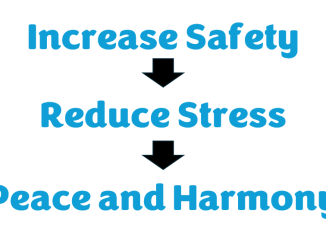I remember watching a fascinating counselling training presentation video from renowned trauma researcher, Dr. Bessel Van Der Kolk.
The psychiatrist, author, researcher, and educator changed his thinking about how trauma affects us when he read about the accidental findings made by the renowned Russian researcher, Ivan Pavlov.
Now, Pavlov is famous because of his conditioning study that linked dog salivation with the ringing of a bell, but something else was learned by way of mother nature.
(Please be aware this next part could be a little disturbing).
The basement where Pavlov kept his dogs in was flooded and the dogs were trapped in their cages for hours with cold water right up to their necks.
They then had to be rescued by way of having to be completely dunked underwater so they could be freed from their cages.
The dogs had been traumatized, and during that trauma, they were not able to elicit their natural stress response – Fight, Flight, Freeze, or Fawn.
In the coming weeks, the researchers discovered the dogs no longer remembered the link between the bell and food, and they stopped playing and withdrew into themselves.
You can see why based on this unfortunate situation, Dr. Van Der Kolk believes childhood traumas can be so devastating for a little person – how can they fight or run when the trauma is being inflicted at the hands of a caregiver?
Now, new research has further boosted the link between the inability to elicit the stress response and the effects of trauma.
Researchers from The University of Colorado Boulder wanted to know why some people who have suffered trauma fully recover, while others struggle to find lasting relief.
They found that inescapable stressors impact behavior and the brain differently than stressors that can be controlled, contributing to more generalized and enduring anxiety-like behavior.
The study, conducted in mice, also implicates a specific type of brain cell, glutamate cells in the ventral tegmental area (VTA), as a key player underlying the impact of stressors.
“Understanding how stressful experiences shape our brain is critical in order for us to develop new treatments and therapies that can counteract these changes,” – Michael Baratta, assistant professor of behavioral neuroscience at CU Boulder.
Baratta and co-senior author David Root, assistant professor of behavioral neuroscience, set out to explore what circumstances, circuits, and cells in the brain might drive those hard-to-treat, non-associative responses to trauma.
First, they exposed one group of mice to a stressor that they could easily escape and another to an identical stressor in duration and intensity but with no ability to escape.
Behaviorally, the differences were profound.
The mice exposed to an inescapable stressor showed more effects on non-associative behavior: Males were less social and less willing to explore and exhibited exaggerated fear; females exhibited general anxiety-like behavior.
Meanwhile, mice exposed to a controllable stressor showed little or no effect the next day.
“Having control over some aspect of negative life events has long been associated with resilience in humans,” said Root.
Next, the research team targeted a brain region called the ventral tegmental area (VTA), often referred to as the brain’s reward center due to its rich fabric of reward-associated dopamine-producing cells.
Through laboratory experiments, they found that stress-activated a different kind of cells in the VTA known as vesicular glutamate transporter 2 neurons (VGluT2), which produce the chemical messenger glutamate, among other messengers.
When they used cutting-edge molecular tools to temporarily silence a subset of those cells before a stressful event, no negative consequences occurred.
“The mice continued to be social, explore new environments, and were very resistant to future stressors,” said Root. “It’s almost as if the animal didn’t experience any stress the day before.”
A future ‘stress vaccine’?
The study confirms that stress-induced activation of glutamate neurons is required for the development of the more intractable behavioral consequences of trauma.
It also suggests that by silencing those cells, the brain can be made more resilient to stress.
The researchers envision a day when soldiers or emergency room doctors could be given a treatment prophylactically to reduce the activity of such cells before they’re exposed to a major stressor, or even after a traumatic event has occurred, to fend off lingering health effects.
“Understanding which neural circuits and cell types contribute to both associative and nonassociative consequences following stress is a critical step toward developing targeted therapeutics to ameliorate mental health disorders that can result from trauma,” said Root.
Some very interesting results in that research and while we don’t specialize in PTSD or Trauma work, it is not uncommon for counselling clients to have experienced some form of trauma.
Hopefully, further research can help contribute to new interventions that can help those people still struggling with the echoes of the past.



